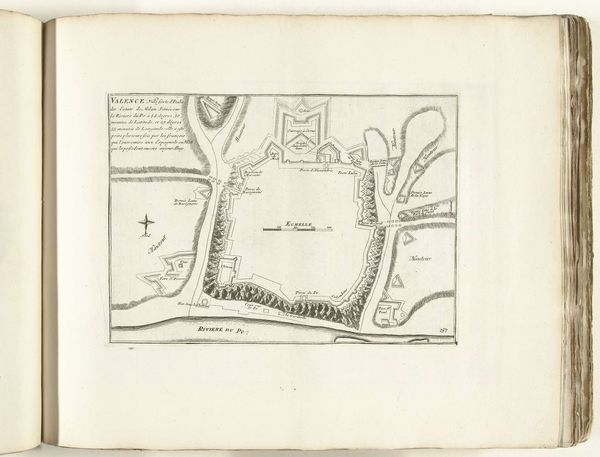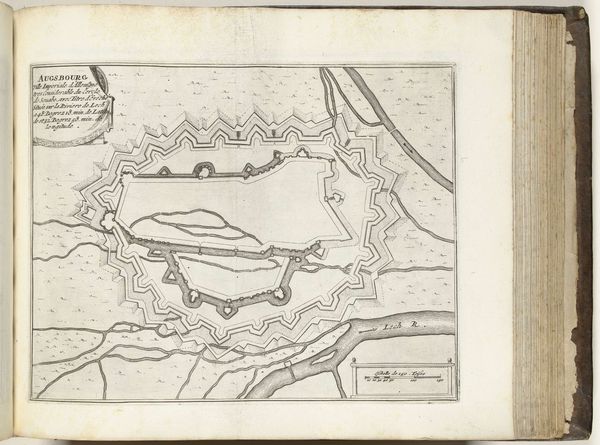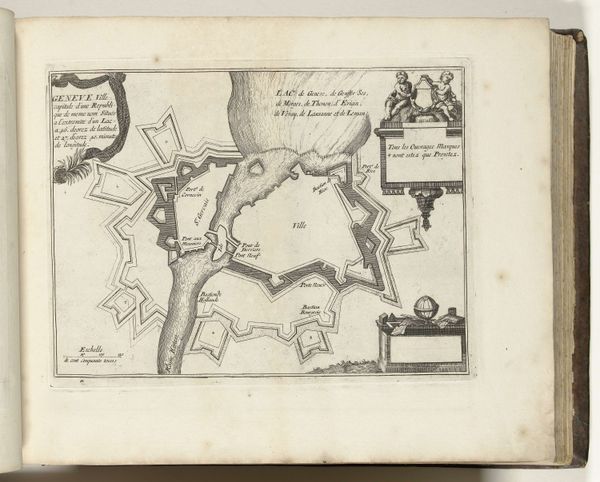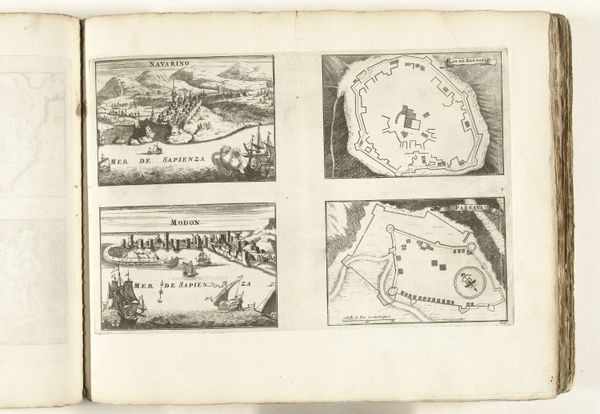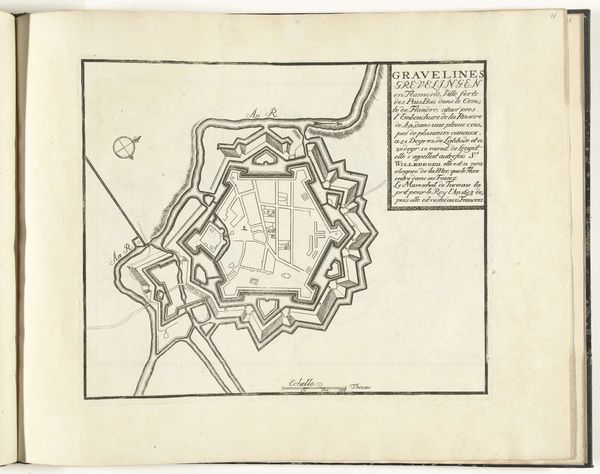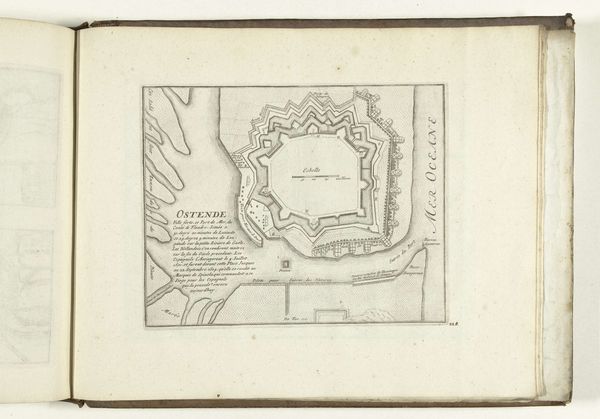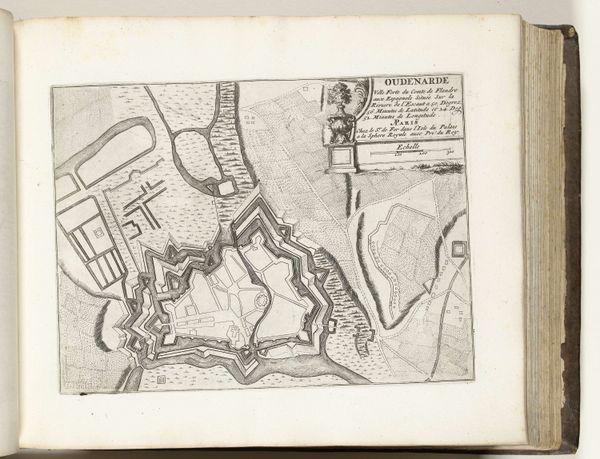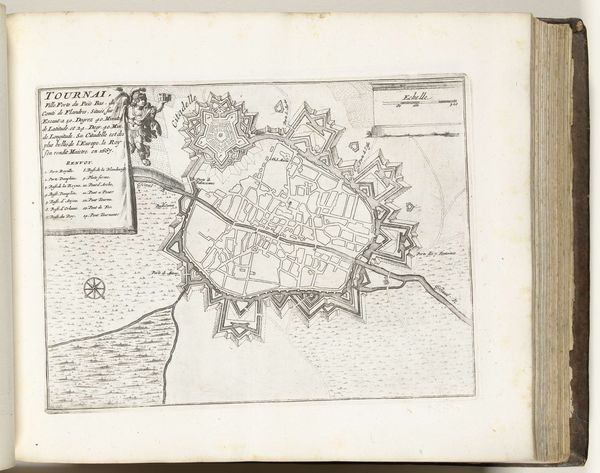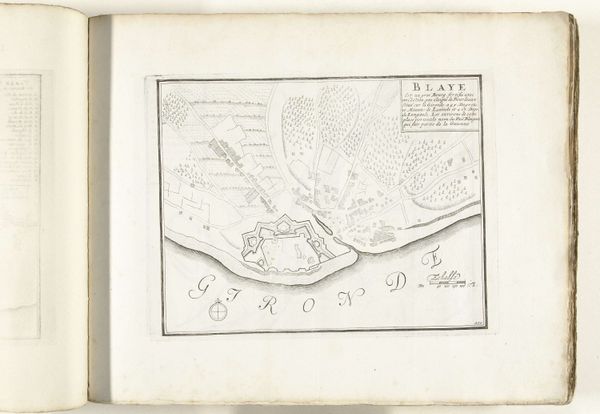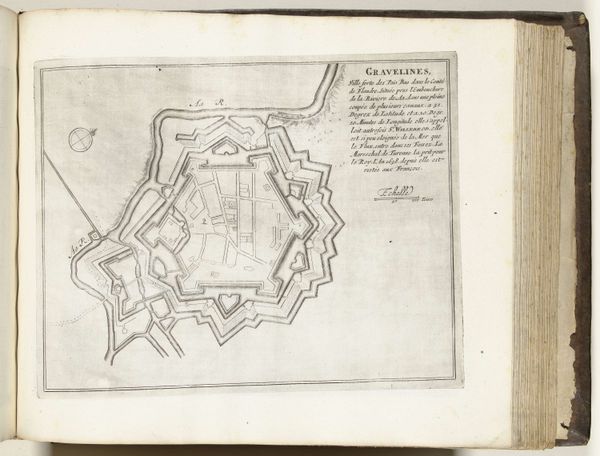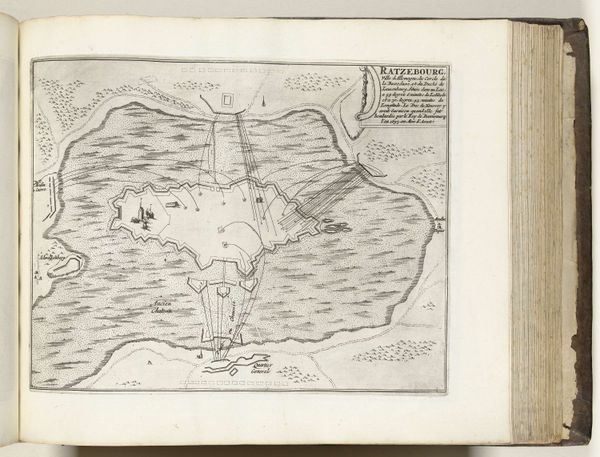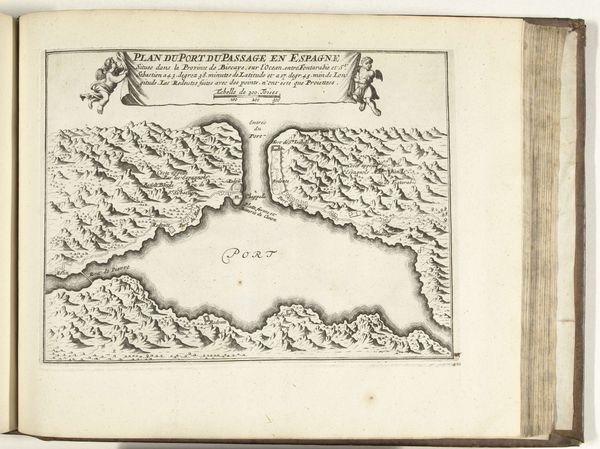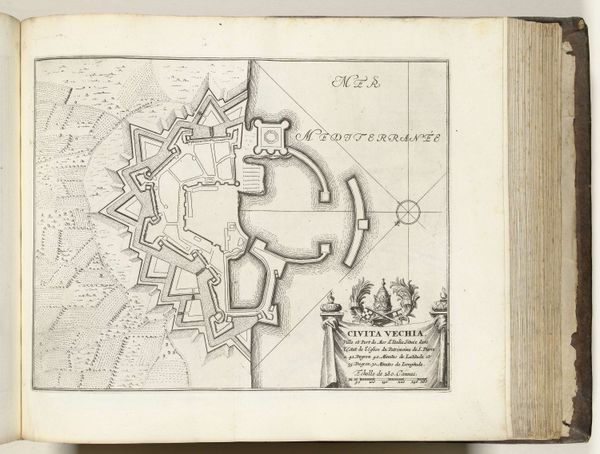
drawing, print, engraving
#
drawing
#
baroque
# print
#
geometric
#
cityscape
#
engraving
Dimensions: height 230 mm, width 292 mm
Copyright: Rijks Museum: Open Domain
Curator: Looking at this "Plattegrond van Bellegarde," a plan of Bellegarde created around 1693-1696, the first thing I notice is this impressive, almost theatrical rendering of a fortified cityscape. The detailed lines give it a palpable sense of calculated precision and imposed authority. Editor: Imposed is the word. It gives the immediate impression of strategic planning—an architectural diagram born from both artistic skill and a desire for domination. What is most visually arresting to me is how geometric the shapes are. I wonder if this obsession with form carries meaning beyond military practicality? Curator: Certainly. In its time, these types of fortifications, particularly in the Baroque era, were signs of power. The city as a geometric symbol showed how a ruler controls the world through design and order, even conquest. Its rigid aesthetic embodies not just the functionality of defense, but its impact on shaping societies through spatial control. The anonymous maker may have simply aimed to inform but likely internalized societal hierarchies through representation. Editor: That's what I'm wondering—if the symbolism isn't unintentional. Geometric designs, particularly circles, pentagons, stars within stars… they are potent alchemical, astrological and esoteric emblems often tied to power, protection, even the divine. Perhaps that aesthetic choice elevated Bellegarde symbolically, suggesting invulnerability or a sense of providence over this urban space? Curator: Perhaps. This city portrait utilizes ink in an engraving and drawing medium, thus suggesting accessibility for distribution and use in governance and city planning, in that period's Netherlands—yet the Baroque details might signify not only accessibility but ambition and political intent. Who consumes the image matters profoundly. Editor: Absolutely. And tracing these influences reminds us that even technical drawings function within wider cultural conversations, layered with conscious or unconscious beliefs, which imbue physical structures with greater symbolic importance over time. Curator: Indeed. This journey from seeing this merely as a map to considering its broader societal significance highlights art's role not only reflecting history but enacting and affecting its flow. Editor: And realizing that images are not only beautiful but potent can reshape our interpretation of both our past and our present.
Comments
No comments
Be the first to comment and join the conversation on the ultimate creative platform.
